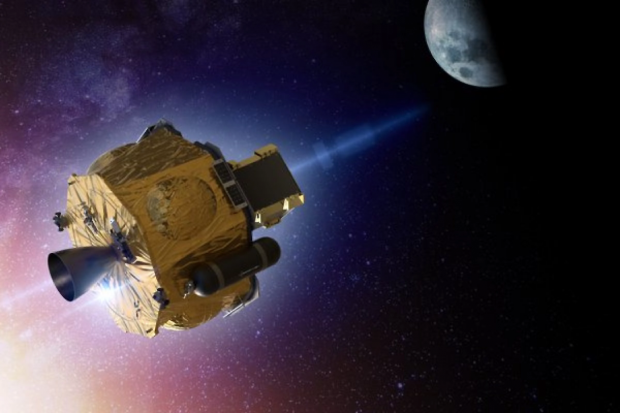
Breaking News
 The Days of Democracy Are Over
The Days of Democracy Are Over
 Elon Musk Described an AI Device to Replace Phones in 5 Years
Elon Musk Described an AI Device to Replace Phones in 5 Years
 Deposit Insurance For Billionaires?
Deposit Insurance For Billionaires?
 Rep. Troy Balderson Is Right: Coal And Gas Drive Affordable, Reliable, And Clean Energy
Rep. Troy Balderson Is Right: Coal And Gas Drive Affordable, Reliable, And Clean Energy
Top Tech News
 Graphene Dream Becomes a Reality as Miracle Material Enters Production for Better Chips, Batteries
Graphene Dream Becomes a Reality as Miracle Material Enters Production for Better Chips, Batteries
 Virtual Fencing May Allow Thousands More Cattle to Be Ranched on Land Rather Than in Barns
Virtual Fencing May Allow Thousands More Cattle to Be Ranched on Land Rather Than in Barns
 Prominent Personalities Sign Letter Seeking Ban On 'Development Of Superintelligence'
Prominent Personalities Sign Letter Seeking Ban On 'Development Of Superintelligence'
 Why 'Mirror Life' Is Causing Some Genetic Scientists To Freak Out
Why 'Mirror Life' Is Causing Some Genetic Scientists To Freak Out
 Retina e-paper promises screens 'visually indistinguishable from reality'
Retina e-paper promises screens 'visually indistinguishable from reality'
 Scientists baffled as interstellar visitor appears to reverse thrust before vanishing behind the sun
Scientists baffled as interstellar visitor appears to reverse thrust before vanishing behind the sun
 Future of Satellite of Direct to Cellphone
Future of Satellite of Direct to Cellphone
 Amazon goes nuclear with new modular reactor plant
Amazon goes nuclear with new modular reactor plant
 China Is Making 800-Mile EV Batteries. Here's Why America Can't Have Them
China Is Making 800-Mile EV Batteries. Here's Why America Can't Have Them
Rocket Lab launches its two-in-one satellite for deep space missions

The team also managed to insert its own house-built Photon satellite into orbit as part of the same flight, it revealed today, marking the first outing for a spacecraft it hopes to one day send to the Moon, and possibly beyond.
New Zealand's Rocket Lab has been delivering satellites to orbit at a steady rate over the past couple of years, carrying out missions for NASA, DARPA and the US Air Force. Last Sunday it put a July launchpad failure behind it with a successful mission for Capella Space, in which a 100-kg (22-lb) satellite was placed into orbit following a clean launch and stage separation.
Soon after that, however, the team initiated a new procedure in which a secondary payload was inserted into orbit. This involved the Electron rocket's Kick Stage, which is a powerful extra stage built into the launch vehicle that uses a cold gas reaction control system to deploy satellites into highly precise orbits. But the Kick Stage is no one trick pony.

 China Innovates: Transforming Sand into Paper
China Innovates: Transforming Sand into Paper

